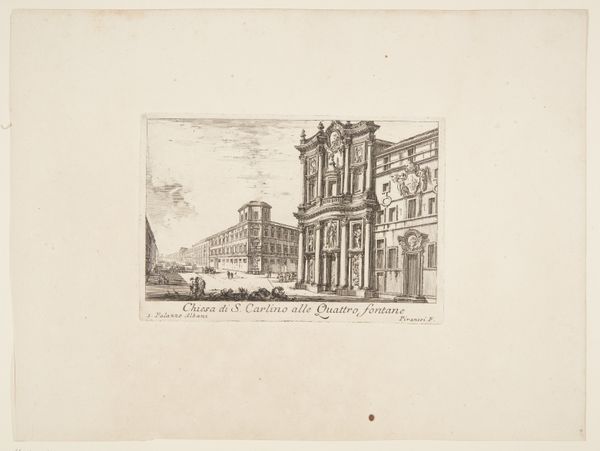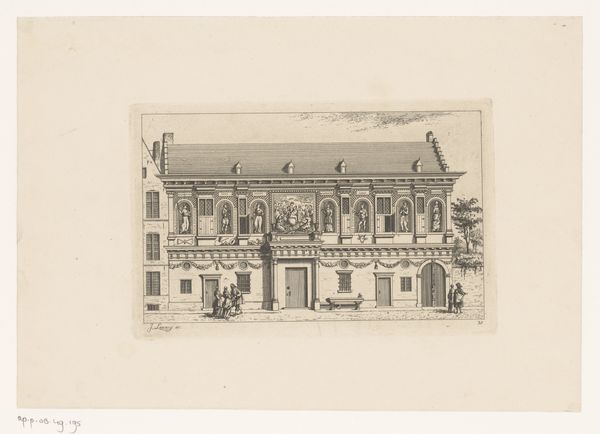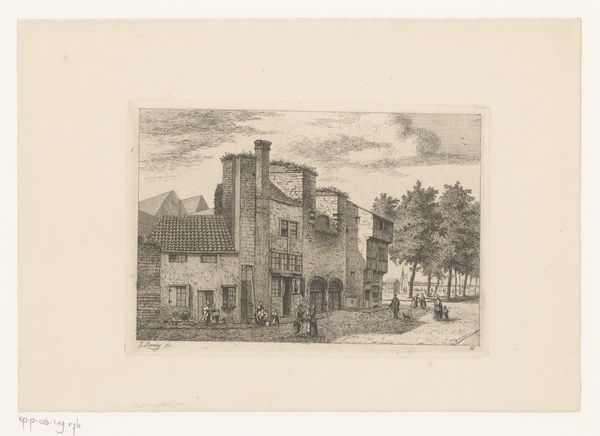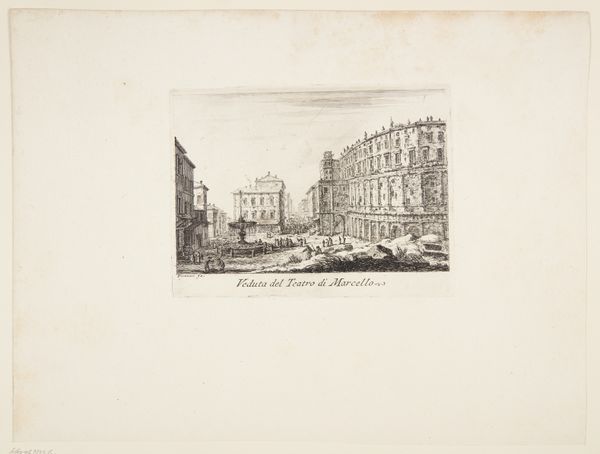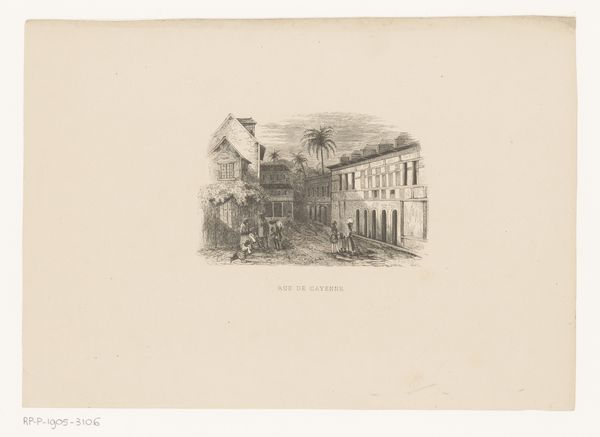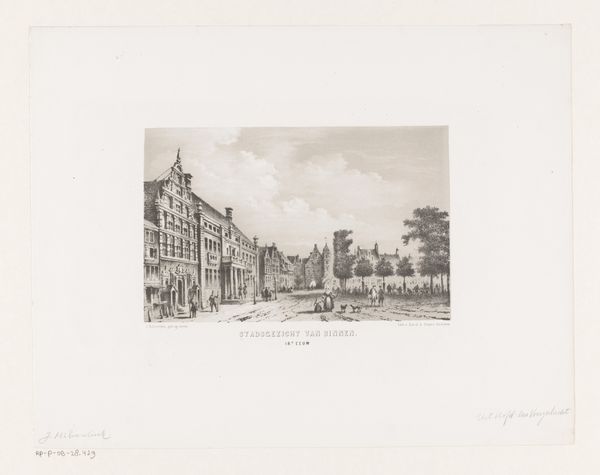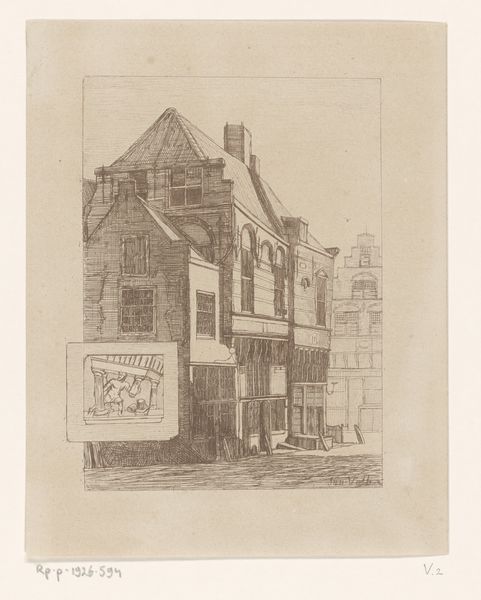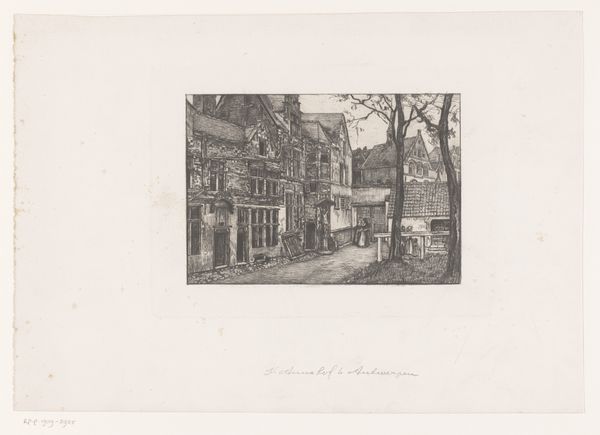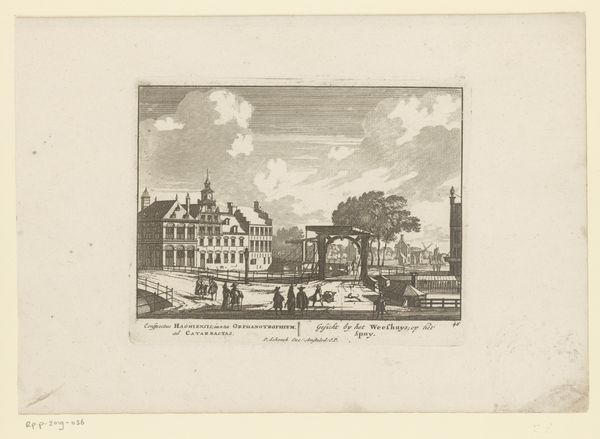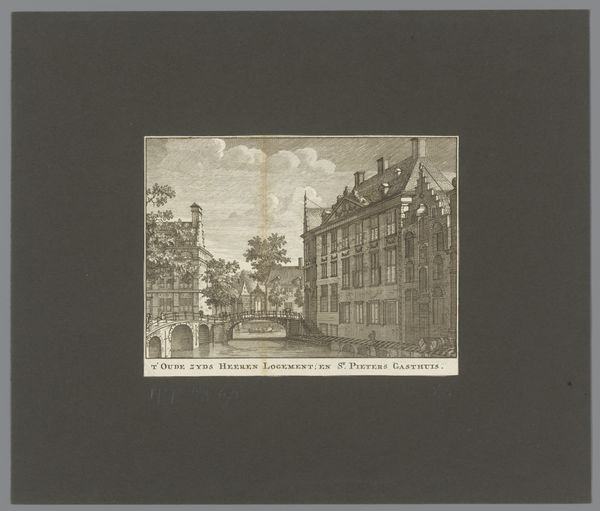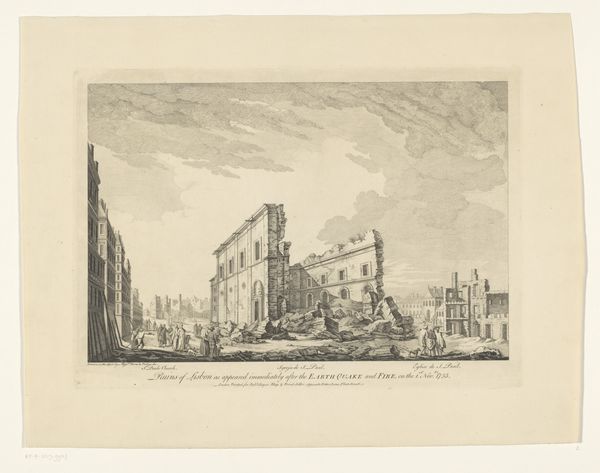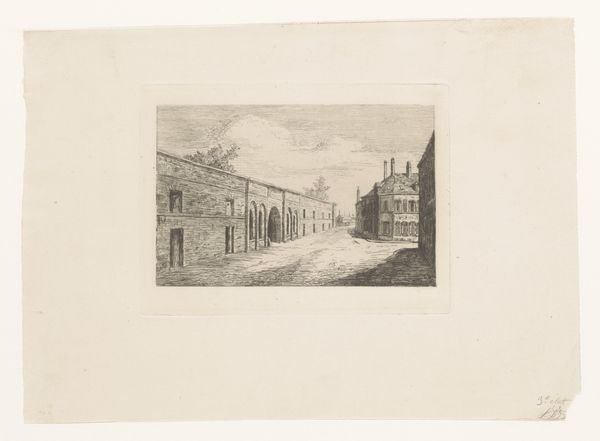
print, etching, engraving, architecture
#
pale colours
#
dutch-golden-age
# print
#
etching
#
cityscape
#
engraving
#
architecture
#
realism
Dimensions: height 254 mm, width 360 mm
Copyright: Rijks Museum: Open Domain
Curator: I'm struck by the almost dreamlike quality of this image; there is an unrealized quietness, suspended. Editor: We’re looking at "Achttiende-eeuws huizenblok," or "Eighteenth-Century City Block," a print rendered by Cornelis Springer sometime between 1827 and 1891, and currently residing at the Rijksmuseum. Springer chose etching and engraving for this cityscape. Curator: The severity of the lines gives it a documentary feel. How might class and commerce have shaped cityscapes like this at that moment? The architecture here—imposing, symmetrical— projects wealth and control, don’t you think? Who are these spaces for, and perhaps more crucially, who are they not for? Editor: The architectural rendering of this place presents enduring archetypes. The balanced composition reminds me of classical ideals – strength and longevity in the buildings, evoking similar concepts within the viewer. The artist conveys themes that society at large values: stability and power, translated through enduring symbols. The walls and carefully constructed edifice suggest a world held safe. Curator: Do you feel that the realism flattens the figures; there's such an emphasis on the buildings that the figures and passing carriage become almost like temporary interlopers. How does this reading change given what would have been occurring around Europe as cities became both spaces of progress and poverty? Editor: That tension is central to how symbols function; they accrue layers over time. This city scene might stand for prosperity or progress at face value. But that's never the complete story. To some eyes it evokes the burdens carried through the ages – an accumulation, or a price paid that the architectural mass has now come to signify. Curator: Indeed. By thinking of these layers, and questioning what exists beneath this "pale colours" – to echo one of our descriptive tags here – the symbolism transforms. Editor: Yes, and viewing its construction also transforms one's comprehension. I shall hold that lesson for the coming day.
Comments
No comments
Be the first to comment and join the conversation on the ultimate creative platform.
